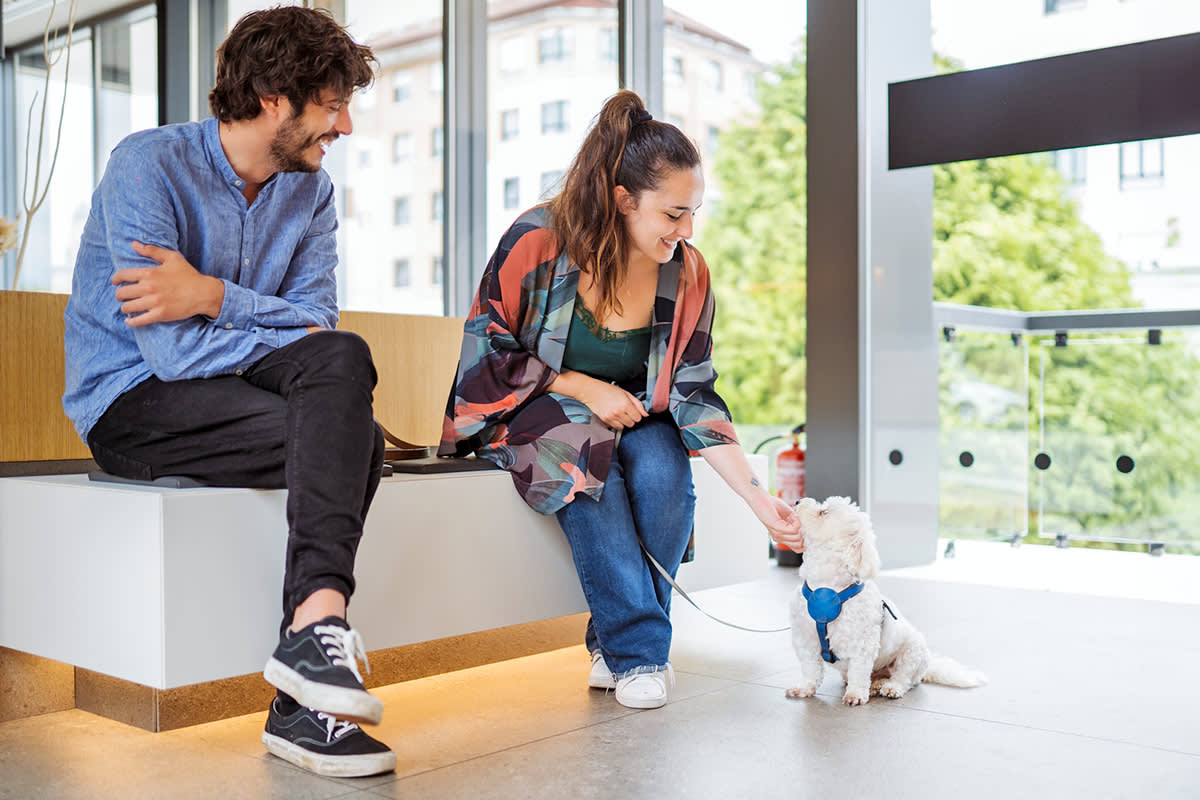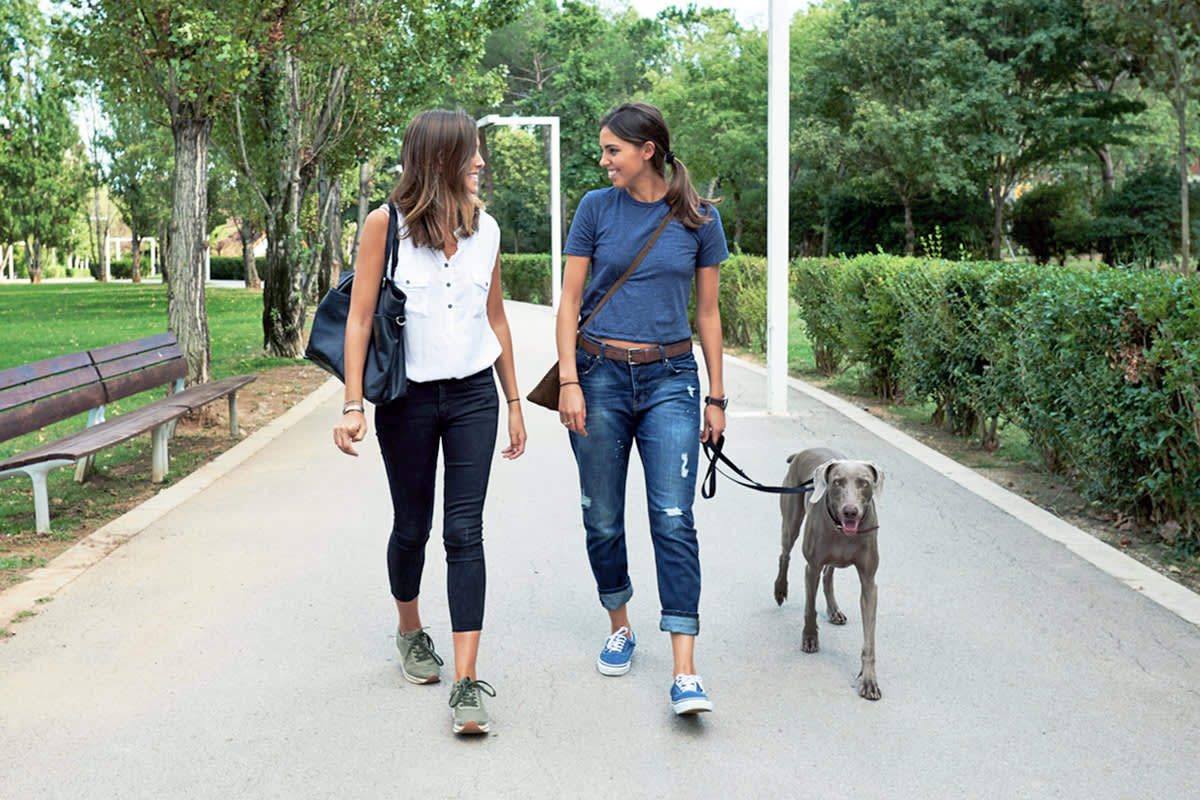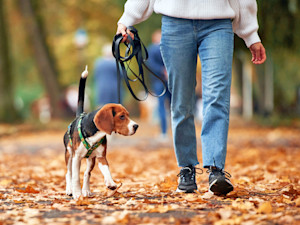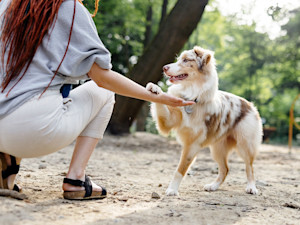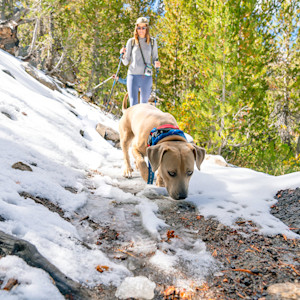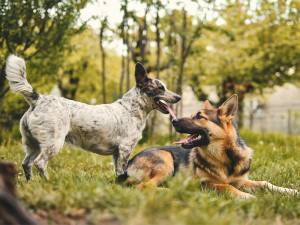10 Reasons You Should Treat Treat Everyone Like a Dog—Advice From a Trainer
Who knew positive reinforcement works just as well on humans, too?
To “treat everyone like a dog” sounds like a bad thing, but when I say that as a trainer, I mean it lovingly and respectfully. We all deserve to be treated the same way that all devoted and kind dog trainers treat the pups in their lives.
Dog training, at its heart, is about influencing behavior, and that basically means getting someone else to do something you want them to do or not to do something you don’t want them to do (all while showing them respect). Highly skilled dog trainers can get a member of another species to back away from steak that fell on the floor, turn around and come running to them instead of continuing to chase a rabbit, wave a paw at them, and walk on the leash.
Dog trainers and behaviorists have information and skills that would clearly be useful for everyone else and know that it is a beautiful thing to treat everyone like a dog. I do it in many ways — here are some of them that you can try.
Use positive reinforcement.
When I say I use the same training techniquesopens in new tab with people as I do with dogs, I know that others picture me just doling out treats to my friends. And that is kind of what I do, in a manner of speaking. When a pleasant consequence follows a behavior, the person who performed that behavior is more likely to do it again. For example, if a dog sitsopens in new tab and is given a treat, or comes when called and then gets to go out for a walk, those behaviors will be more likely to happen again.
How much do you spend on your pet per year?
If a friend of mine tells an amusing story and I laugh, they are more likely to tell stories in the future. When my kids were young, if they cleaned their room, I let them stay up a little later. This made them more likely to pick up after themselves in the future.
Work on one aspect of a skill at a time.
Dog trainers understand that skills consist of many aspects, and an individual can’t succeed at learning all of them at once. For example, there are three main elements of a dog learning how to “stay.” We call it “the three Ds”: the dog must learn to stay for a long time (duration), to stay when the person is far away (distance), and to stay when there’s a lot going such as dogs walking by, kids running around, or squirrels in the vicinity (distraction).
For example, if you are working on teaching your dog to stay when the distraction level is high, they will more likely be able to handle that if you only make them stay for a short period of time and remain near them. If you are teaching your dog to stay for longer, start out near them, and make sure they’re calm. It’s unreasonable to ask a dog to stay for longer than they are used to if you are far away.
Just because your dog can stay for three minutes at home on their dog bed with you in the other room doesn’t mean they stay at the dog park for that long with you out of sight. It’s only when the dog has had lots of practice with each of the three Ds that they can put it all together and stay for a long time with you far away and with plenty of distractions.
When it comes to people, learning should also be broken down into parts with the goal of making success possible. When someone is learning to play a new piece of music on the trumpet for example, there are different things they can focus on as they recite each time: playing the right notes, following the correct rhythm, their tone, breathing at the right intervals, and playing at the desired volume. When the musician is working on hitting the right notes, their rhythm may not be as good, and when working on the tone, their breathing pattern may suffer. Only when each of those aspects of playing the piece are in place can the full set of skills be put together and the piece played as it is meant to be.
Pay attention to how you use your voice.
The way we use our voice matters with dogs, and it matters with people in the same general ways. When we call dogs to come, we put a lot of energy into our cue and we make it high-pitched, excited, and we add in lots of syllables or notes. For dogs, high-pitched, rapidly repeated notes stimulate activity, which is why dog trainers often clap, say “pup, pup, pup” or “whoop, whoop” when calling dogs. It’s useful in the same way to hurry kids up when you are running late: “Let’s go, let’s go, let’s go, hurry, hurry, hurry!”
The same is true for people. I think back to when I was learning how to drive on narrow, winding roads in the hills around Portland, Oregon, and my instructor would say, “Please, try to stay on this side of the double yellow line” as though it’s not essential, but just a really nice idea. I appreciated his calm manner because driving was stressful enough without being hollered at. I find that same tone of voice useful when I have to deal with insurance companies, making a return at a shop, or any time I have to call the bank.
Tell someone what you want them to do, rather than getting upset at them for breaking the rules.
A lot of my time as a dog trainer is spent working with people who want their dog not to do something like jump up, dig in the garden, or chew on the furniture. Many clients have difficulty stopping their dogs from engaging in such behaviors because they are focused on telling their dog to knock it off but getting nowhere with that strategy. Remember, the dog-training approach to solving such problems is to focus on what we want them to do rather than on what we don’t want them to do. For example, if dogs jump up when they greet people, we teach them to sit when they greet people instead. They cannot simultaneously sit and jump up because those behaviors are incompatible.
I relied on this concept while going through the checkout line at the grocery store when my kids were little. The problem was their tendency to grab the gum or candy that is oh-so-conveniently placed there. My strategy was to teach them to do something else in that context so that it became a habit. The moment we joined the line, I would choose an item from our cart to hold, and it was always an item that took two hands to hold — like a plant or a box of crackers. They would hold it, proud as could be, the whole time we were in line. I taught them to give it directly to the cashier to ring up and then retrieve it and put it in one of our bags. That got them safely past the gum and candy.
With their hands full, those hands weren’t able to get into other kinds of trouble. As a bonus, they enjoyed helping out. They felt good to be trusted to do something they considered important, and they loved the praise (positive reinforcement!) they often got from grocery workers who told them they were well-behaved and helpful.
Understand body language and general tendencies.
Even beginning dog trainers know that dogs are more alert to visual signals than to verbal cues, that dogs are responsive to a human leaning toward or away from them, and that dogs who flick their tongue out or shake their whole body may be indicating they are feeling a bit stressed or anxious. That knowledge is useful for effectively training our dogs.
Similarly, a knowledge of human behavioral tendencies can make life easier. For example, it’s useful to know that people are more likely to do what you want if they agree to it ahead of time. When restaurants ask people making a reservation, “Will you call to cancel if you cannot make it?”, they have fewer no-shows than when they simply say, “Please call if you will not be able to make it.” That sounds more like a suggestion than an agreement, aka to the human brain, it’s less important.
Be consistent.
Consistency makes learning more efficient and less stressful. If your dog is learning that sitting before going for a walk leads you to attach their leash and head outside, they know they have to do that every time. But if, for example, you sometimes let your dog jump all over you before a walk, that’s confusing. Changing things up makes it harder for dogs to figure out what you expect of them.
The idea that consistency is important is common knowledge when it comes to kids for everything from their bedtime, when to do homework, how to act when meeting new people, and everything else about their daily life. Consistency is not emphasized as much with adults, but it’s important for them, too. Anyone in a position of authority — whether it’s managing a team in business, teaching, or coaching a sport — will have more confident and secure people around them if they behave in a consistent manner.
If someone in charge is friendly and helpful one day, but angry and rude the next, those on the receiving end of this unpredictability get nervous. If what earns praise or other benefits is a mystery because the rules change, people have a harder time learning. As a result, they are less likely to work hard, a situation no coach, teacher, or manager wants.
Make it a game.
Playing with dogs is a powerful, yet underutilized way to influence behavior. Dog trainers know this, which is why they so often teach their dogs new skills through play. For example, you can call your dog to come and reinforce them by letting them chase you. It makes it worthwhile for dogs to respond to your cue to “Come!” if it leads to a game. Similarly, it’s easier to teach a dog to “Drop It” if releasing an object results in you throwing it for them so they get to play fetch. In the event they have something you don’t want them to have like a leather boot or wooden salad servers, you can say, “Drop It” and then throw a ball or toy when they do as you ask. Suddenly, play becomes another one of your best friends.
Play is powerful with people, too. Encouraging your messier-than-you spouse to put their dirty laundry where it belongs instead of on the floor can be as easy as setting a toy basketball hoop over the laundry basket. (Reinforcing them by ooh-ing and aah-ing over good shots can also help!) Kids in a race against the clock to accomplish a goal of tidying up to “win” tend to move more quickly and get more done in a small amount of time, especially if guests are coming over.
Use classical conditioning.
Classical conditioning is a type of learning that happens when an animal learns that events in their environment regularly go together. Specifically, it’s what happens when an animal learns that one event in the environment reliably predicts another.
For example, many dogs learn to be scared of lightning because the thunder that always follows is terrifying to them. Dogs also learn that when you pick up the leash, you are going for a walk. That’s why so many dogs become super energetic with joy when you pick up the leash. They are happy about it because it reliably predicts the highlight of their day: a walk.
Classical conditioning is just as powerful with people as with dogs. If you make a habit of making an amazing breakfast on Monday morning for your roommate who gets anxious at the start of the workweek, they will start to have more positive feelings about Mondays. It works well with kids, too. When our children were young, they always received a piece of candy after their dad cut their hair. Once they recognized this pattern, haircuts became one of their favorite things.
Shape their behavior.
Shaping behavior means to teach a dog to perform a skill by reinforcing successive approximations of the behavior you’re looking for. For example, when teaching a dog to roll over, the first step is to get them to lie down. The following steps could be rolling onto one hip, putting their shoulder down, lying on their side, being on their back with their legs facing up, turning onto their other side, and — finally — completing the roll-over. Over many sessions, the dog can learn the full behavior of rolling over, but in each session, they will be reinforced for doing what they have learned so far. TLDR: Take things a step at a time.
People are taught foreign languages through a shaping approach. At first, they say all the sounds in the word. Intermediate steps would be pronouncing closer and closer approximations of the real sounds so they seem more like the way native speakers say them. Advanced steps: very precise replication of the accent and sounds. This way, the learner sounds like they are actually speaking the new language and not just saying foreign words in English.
Shaping is a good technique for learning many skills in sports, such as a hockey stop on ice skates, using starting blocks on the track, and serving overhand in volleyball. Whatever the skill, the key is to start with something that resembles what you want and to work on improving it gradually over time until the behavior is as it should be.
Really, go ahead and treat everyone like a dog!
About 20 years ago, after nearly a decade of training dogs professionally, I began consciously applying what I had learned in my work to the people in my life. I became nicer and happier, with less conflict in my life. It was a courtesy to those around me to treat them like I treat dogs, using kinder, more effective, and gentler ways to teach, train, and influence behavior.
One of the very best consequences of using positivity in our interactions with people — like we do with dogs — is that it strengthens our relationships, rather than damaging them. That is part of the reason dog trainers put such an emphasis on encouraging their clients to improve the relationship they have with their dogs.
The subject of applying dog training skills to people is such a passion of mine that I wrote a book on the subject opens in new tab called Treat Everyone Like a Dog: How a Dog Trainer’s World View Can Improve Your Life. When I began writing it, it felt like I was penning a love letter to my fellow dog trainers and providing a manual for everyone else. By the time it was published, I realized the best way for me to describe what the book means to me is to declare, “This book isn’t just what I do; it’s who I am.” (And I bet your dog thinks it’s who you should be, too.)



